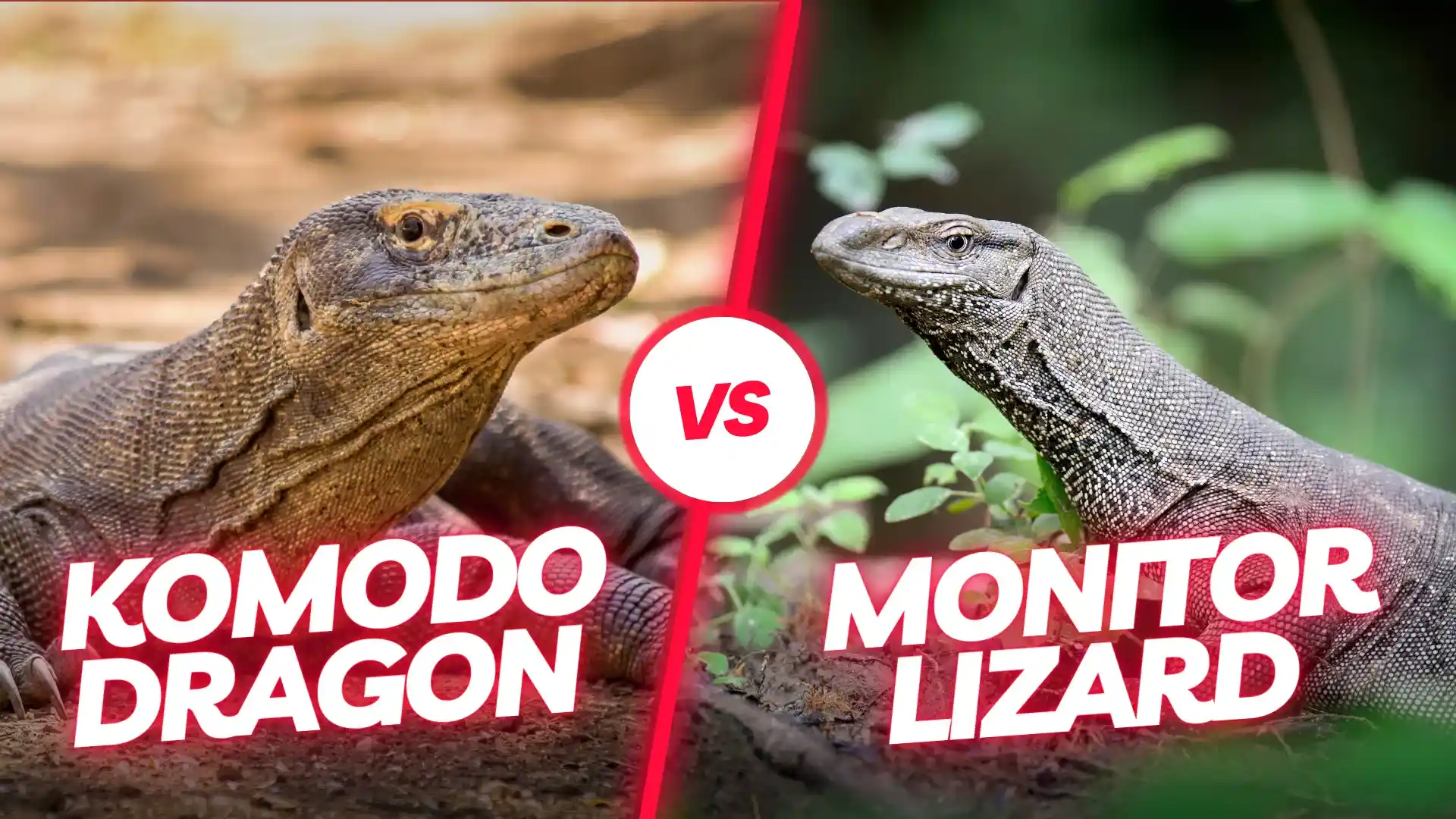Monitor lizards vs Komodo dragons are two of the most powerful and massive reptiles we know. While they belong to the same family, their differences are just as intriguing as their similarities. Both of these creatures have earned a reputation for being formidable hunters, yet their lifestyles, habitats, and behaviors make them uniquely fascinating. Whether you’re a reptile enthusiast or just curious about these creatures, let’s dive into what sets them apart. We will discuss various important aspects of these two animals, from general descriptions, size comparisons, and appearance to who might win in a fight between the two. Let’s begin by understanding each species!
The Monitor Lizard: A Diverse Reptile
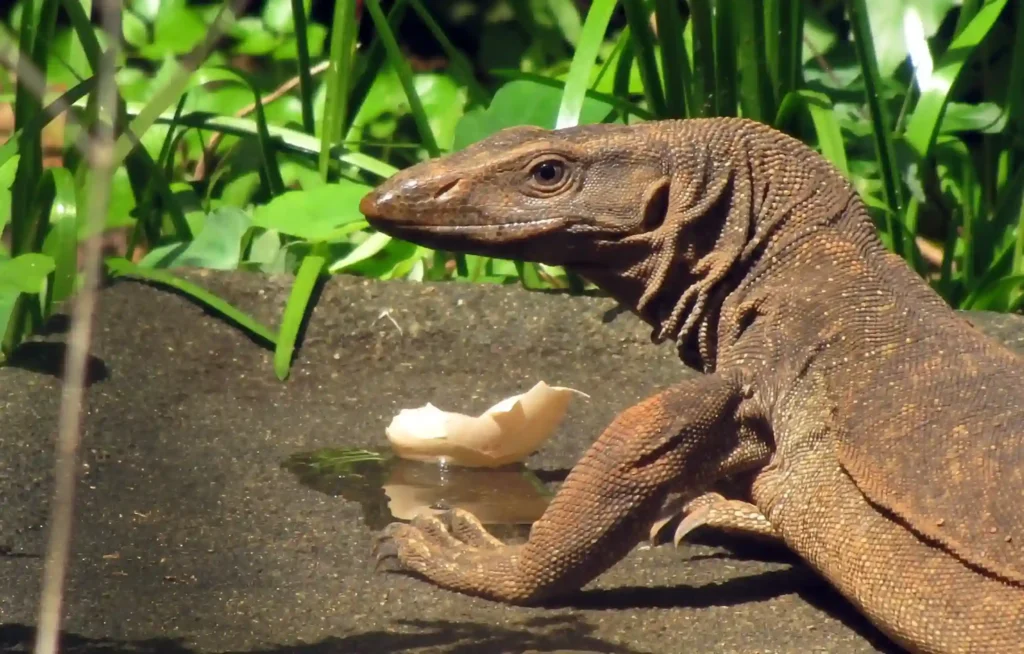
Monitor lizards, part of the Varanus genus, are found across Africa, Asia, and Australia. There are over 80 species of monitor lizards, ranging from small species that fit in your hand to giants that stretch up to 10 feet. One of their most well-known members is the Nile monitor, which is common across Africa.
A common question people ask is, “Are monitor lizards poisonous?” The answer isn’t straightforward. While most monitor lizards are not traditionally venomous like snakes, many do possess venom glands. However, their venom is generally mild to humans and primarily used to weaken their prey. These lizards rely more on their strength, sharp claws, and strong bite to catch and kill food.
The Komodo Dragon: King of Lizards
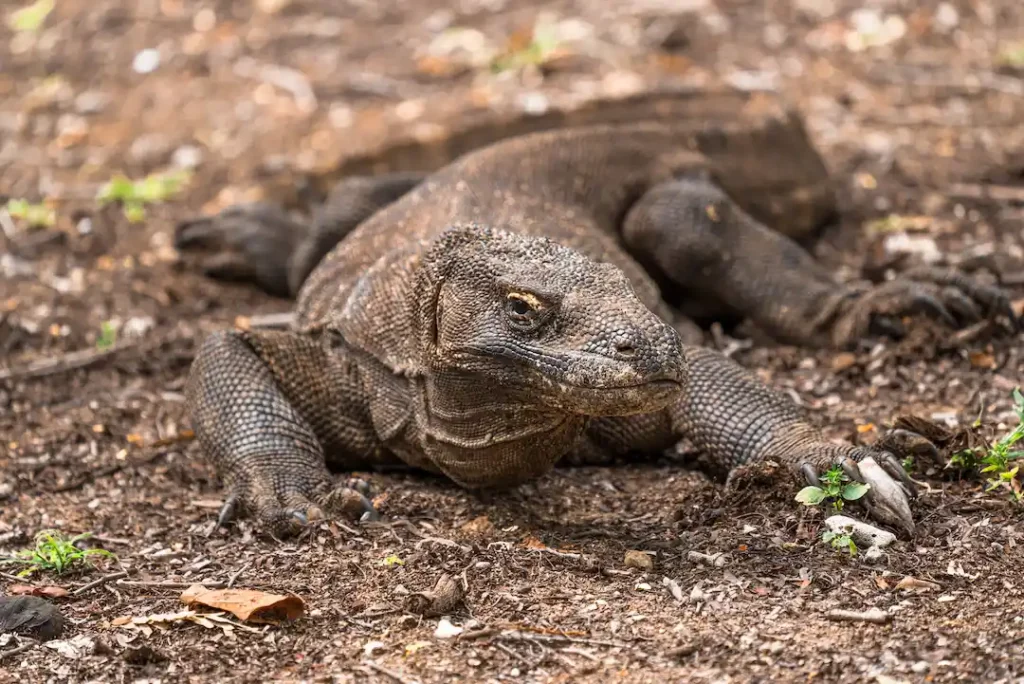
Now let’s talk about the Komodo dragon—arguably the most famous lizard on the planet. These giants are native to a few small Indonesian islands, including Komodo, Rinca, and Flores. Growing up to 10 feet long and weighing up to 200 pounds, Komodo dragons are the largest lizards in the world. Their size alone is intimidating, but it’s their deadly bite that truly sets them apart.
Komodo dragons are well-known for their venomous bite, which contains toxins that cause massive blood loss and shock in their prey. Once bitten, the prey may try to escape, but it won’t get far before collapsing from the effects of the venom. The Komodo dragon then follows its scent, finishing off the kill.
Monitor Lizard vs Komodo Dragon: Side-by-Side Comparison
Let’s break down the differences between these two fascinating reptiles:
| Category | Monitor Lizard | Komodo Dragon |
| Size | Varies by species, typically 3-7 feet | Up to 10 feet, 150-200 pounds |
| Appearance | Sleek, muscular, with various colors and patterns | Stocky, thick scales, rough texture, brown-gray |
| Diet | Carnivorous, eats insects, birds, small mammals | Carnivorous, preys on large animals like deer |
| Lifespan | 8-20 years, depending on species | Around 30 years in the wild |
| Habitat | Found in forests, deserts, and grasslands | Limited to Indonesian islands |
| Behavior | Solitary, opportunistic hunters | Aggressive, territorial, deadly bite |
Main Differences Between Monitor Lizards and Komodo Dragons
While they are part of the same family, monitor lizards and Komodo dragons differ in significant ways. There are clear distinctions that set them apart:
- Size: Komodo dragons are much larger. While some monitor lizards like the Perentie can grow to impressive sizes, they are still no match for the massive Komodo dragon.
- Venom: While many monitor lizards possess venom glands, the venom isn’t as potent or deadly as that of the Komodo dragon. The Komodo’s venom contains toxins that significantly affect blood clotting and shock response in its prey.
- Habitat: Monitor lizards are widespread, found across continents, whereas Komodo dragons have a limited range and can only be found in a small part of Indonesia.
- Behavior: While both species are hunters, Komodo dragons are known to be more aggressive and territorial, especially when it comes to food. Monitor lizards, on the other hand, are more solitary and generally avoid confrontation unless provoked.
Are Komodo Dragons the Same as Monitor Lizards?
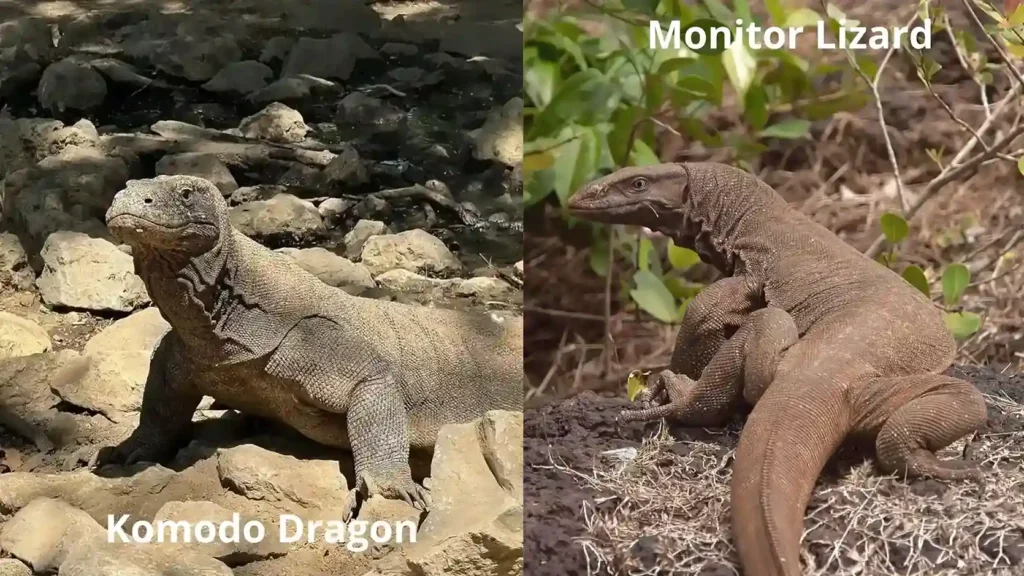
Technically, yes. According to Britannica, Komodo dragons are a type of monitor lizard. However, they are a species of their own, unique in size, power, and habitat. They are the largest living species within the monitor lizard family and are specifically adapted to survive in the remote islands they call home. While they share some similarities, like their carnivorous diet and muscular build, Komodo dragons are set apart by their massive size and powerful venom. So, while all Komodo dragons are monitor lizards, not all monitor lizards are Komodo dragons.
Who Would Win in a Fight: Monitor Lizard or Komodo Dragon?
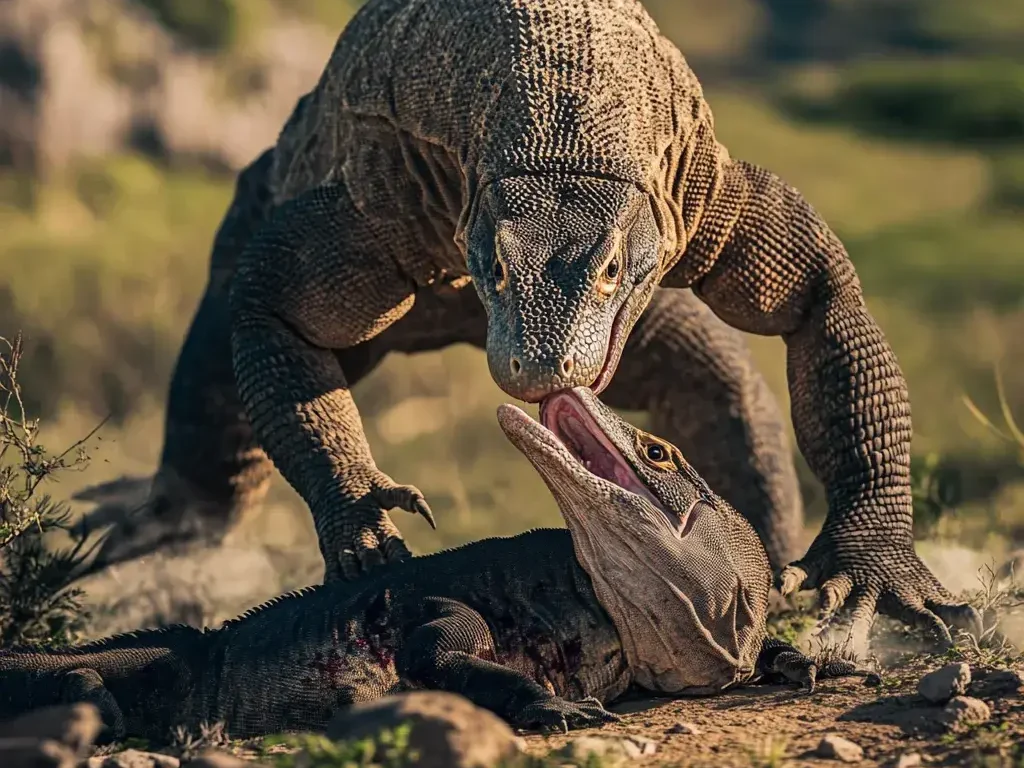
This is the question many enthusiasts ponder. In a one-on-one battle, a Komodo dragon would most likely overpower a typical monitor lizard. Komodo dragons are not only larger, but they are equipped with stronger venom and more muscular bodies. Their powerful tails, sharp claws, and ability to deliver a deadly bite give them a serious advantage.
However, if we’re talking about smaller species of monitor lizards versus a Komodo dragon, the outcome is quite clear: the Komodo dragon reigns supreme. On the other hand, if we pit a larger species, such as the Perentie monitor, against a Komodo dragon, it might be a closer match, though the dragon’s size and strength would likely still give it the upper hand.
Conclusion
Both Monitor Lizards and Komodo dragons are incredibly fascinating creatures, each with their own unique characteristics. While monitor lizards are found across the globe in a variety of sizes and habitats, the Komodo dragon stands out as the undisputed king of the lizard world. Its sheer size, aggressive hunting techniques, and venomous bite make it one of the most awe-inspiring reptiles on the planet.

If you’re intrigued by the idea of seeing a Komodo dragon in its natural habitat, there’s no better way to do so than with Komodo Island Tour Package by Komodo Luxury. Offering a once-in-a-lifetime opportunity to witness the world’s largest lizard up close, these tours allow you to explore the rugged beauty of Komodo Island while learning about its unique wildlife. With expert guides leading the way, you’ll have the chance to experience the thrill of being near these ancient creatures in one of the most breathtaking environments on Earth.
Read more: Komodo Dragon vs Crocodile: Who’s the Strongest Predator?







